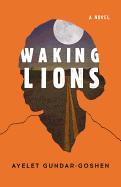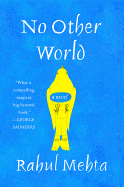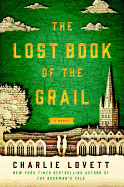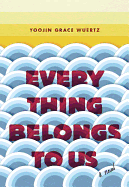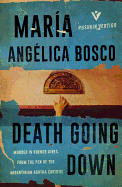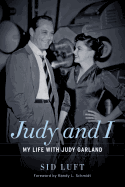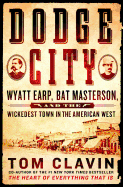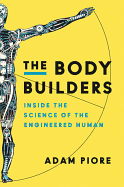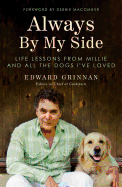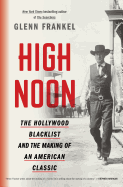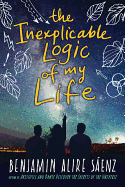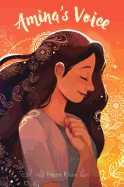Peggy Orenstein's Girls and Sex
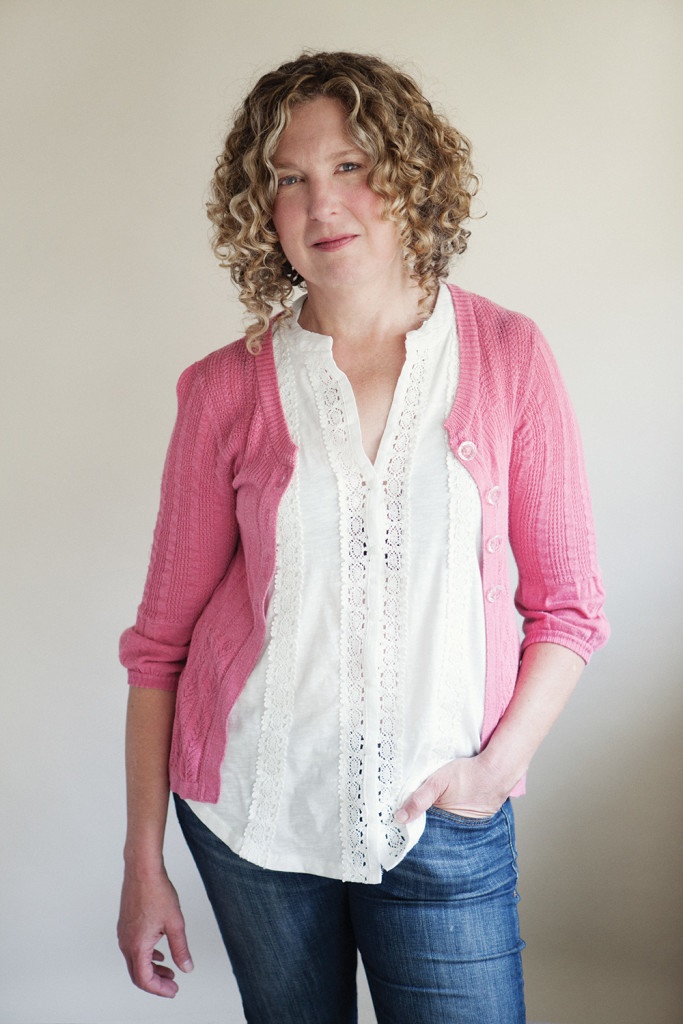 |
| photo: Michael Todd |
Newly released in paperback, Peggy Orenstein's Girls and Sex: Navigating the Complicated New Landscape (HarperCollins, $15.99) is, quite frankly, terrifying. As the mother of two teen girls and fan of Orenstein's intelligent and thought-provoking work (Cinderella Ate My Daughter), this study of 21st-century sexual culture--culled from interviews with more than 70 high school and college-aged girls--was an auto-buy for me. Ten pages in, I patted myself on the back for bravely going where many parents would not. Twenty pages past that point I wondered whether my courage could prevail. And 15 more found me resolute, both perplexed by my own ignorance and eager to educate myself about the current state of sex in the United States.
People, it's complicated. And Orenstein is the first to admit as much. The nature of relationships has changed. Many begin with a physical encounter of some kind (hello, hookup), then, should the stars align, progress to a date, then a second, and so on. Emotional connection ("catching feelings") is a no-no. The definition of "virginity" is open to debate; what constitutes consensual sex depends on who you're talking to; and the list goes on. Here's a hint: this is all just as confusing for your girls as it is for you.
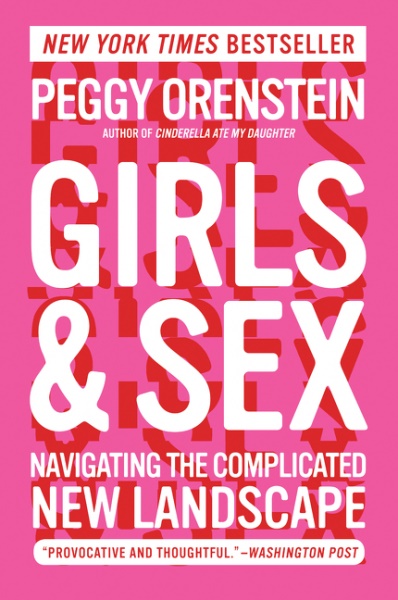 Orenstein's genius is in her ability to coalesce this broad range of insight and information into something that urges us to think beyond the standard talking points. Yes, disease, consent and contraception are need-to-knows. But so is the idea that sexuality can "be a source of self-knowledge and creativity and communication." And girls should be emboldened to "ask for what they want in the bed, and to get it." Yes, as my youngest daughter would say, this conversation would, most likely, be "cringe-y." But oh, so worth it. --Stefanie Hargreaves, editor, Shelf Awareness for Readers
Orenstein's genius is in her ability to coalesce this broad range of insight and information into something that urges us to think beyond the standard talking points. Yes, disease, consent and contraception are need-to-knows. But so is the idea that sexuality can "be a source of self-knowledge and creativity and communication." And girls should be emboldened to "ask for what they want in the bed, and to get it." Yes, as my youngest daughter would say, this conversation would, most likely, be "cringe-y." But oh, so worth it. --Stefanie Hargreaves, editor, Shelf Awareness for Readers
Peggy Orenstein's Girls and Sex
Reading with... Yewande Omotoso
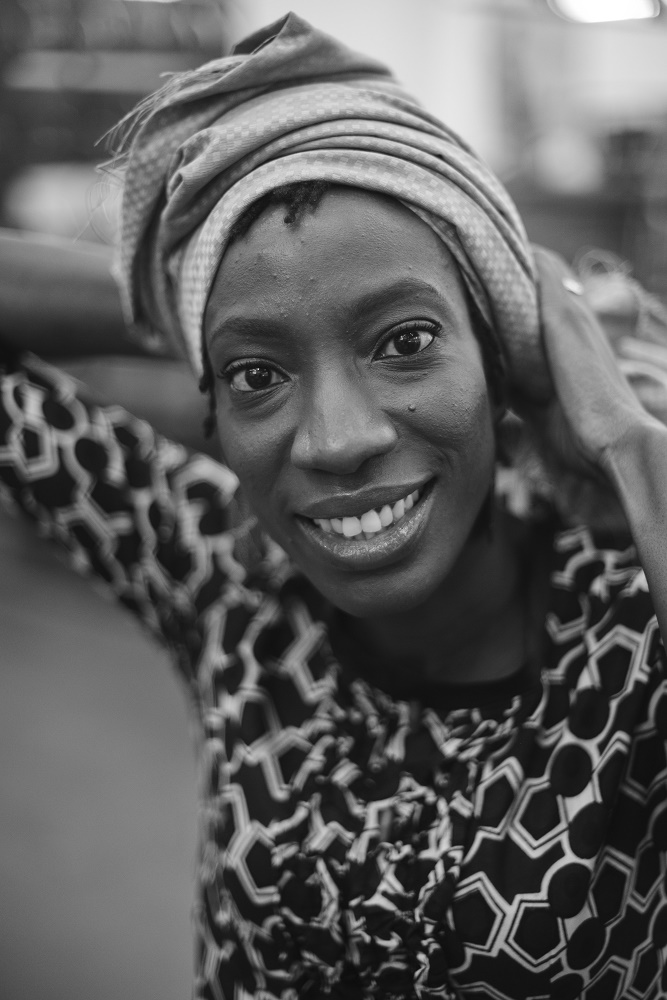 |
| photo: Victor Dlamini |
Yewande Omotoso was born in Barbados, grew up in Nigeria, and moved to South Africa with her family in 1992. She is the author of Bom Boy, published in South Africa in 2011. She won the South African Literary Award for First-Time Published Author, was shortlisted for the South African Sunday Times Fiction Prize, and was a finalist in the inaugural pan-African Etisalat Fiction Prize. She lives in Johannesburg, where she writes and has her own architectural practice. Her U.S. debut, The Woman Next Door, was published by Picador on February 7, 2017.
On your nightstand now:
A Thousand Acres by Jane Smiley. Like a Mule Bringing Ice Cream to the Sun by Sarah Ladipo Manyika. Taduno's Song by Odafe Atogun. The Sellout by Paul Beatty. Tram 83 by Fiston Mwanza Mujila. The Story of Anna P as Told by Herself by Penny Busetto. Things Unseen by Pamela Power. I'm not reading them all at once though, I've never been able to read more than one book at a time. Instead they represent the most recent books I've read, the one I'm actually reading and the ones I'll be reading next.
Favorite book when you were a child:
Old Possum's Book of Practical Cats by T.S. Eliot. Some of my earliest memories are of my mother reading these poems to my brothers and me at bedtime. She was very good with the voices and we never tired of them.
Your top five authors:
I'm not a top-five person. I'm not even a top-10. Perhaps I could create a top-25 list without too much of a sweat, but seriously I hate to choose. There are so many incredible authors that inspire me. So perhaps I'll take the liberty of rephrasing the question. There are so many authors I love and respect, but there are a few whom I read where I know this isn't just loving a work, this is instruction. A writer like Siri Hustvedt feels like instruction. Similarly, Toni Morrison, Helen Oyeyemi--I feel compelled to read all their works, that this is somehow important for my own growth as a writer.
Book you've faked reading:
Being a Nigerian and knowing that the book was taught in schools across the country, I don't know how I missed this, but for a long time (too embarrassing to give specific time period) I hadn't read Things Fall Apart by Chinua Achebe. And I never had to work hard to fake it because it was pretty inconceivable for anyone to imagine that I hadn't read it. Anyway I can confess this here because I've now corrected this grievous error.
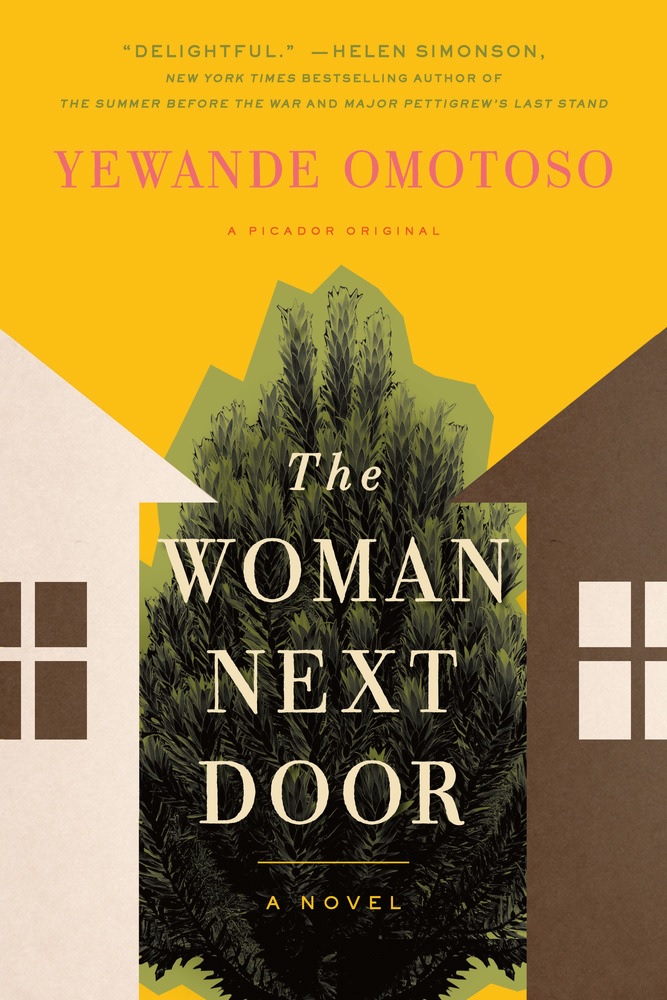 Book you're an evangelist for:
Book you're an evangelist for:
There are many books I turn to in worship. Of late Three Strong Women by Marie NDiaye just amazed me. In general I think Helen Oyeyemi's writing demands evangelism.
Book you've bought for the cover:
None. While I have a deep appreciation for aesthetics when it comes to books, I seem to abide by the cliché that says don't judge based on looks. In the end, though, I usually buy based on the first sentence and the typeface.
Book you hid from your parents:
Love at Second Sight by Cathy Hopkins--a very Mills & Boon-y book. I was quite young and thought my parents would be scandalised to see me reading a book with the word "breast" on so many of the pages.
Book that changed your life:
The God of Small Things by Arundhati Roy. She's an architect, I was studying architecture at the time and not really loving it, wanting to write but thinking I'd lost my chance somehow. Reading the book gave me courage and a sense of hope that things could still work out.
Favorite line from a book:
Again there are many. My problem is my memory is useless! But one I remember often and smile (cry?) about: "Why be happy when you could be normal?" from Jeanette Winterson's book with the same title.
Five books you'll never part with:
I struggle to part with any of the books I read, and I lend them out reluctantly, because I imagine I'll never see them again. But then again I've moved a lot and so, strangely, many of my favourite books aren't on my shelf, they are in storage somewhere or "lost." As a result some of the books I have loved dearly are nowhere to be found--Their Eyes Were Watching God by Zora Neale Hurston, So Long a Letter by Mariama Bâ, all the plays by August Wilson and many more.
Book you most want to read again for the first time:
I can think of several, and most are tied in with nostalgia. The books I read when I was between the ages of 12 and 14: Yoruba Girl Dancing by Simi Bedford. In The Castle of My Skin by George Lamming. Beka Lamb by Zee Edgell. As with music, the books you read at certain times in your life hold a special space, not only because of the specialness of the books themselves but also the particularity of the actual period you encountered them in.
Reading with... Yewande Omotoso
Grammar Jokes
"Past, present, and future walk into a bar..." Buzzfeed told "25 jokes guaranteed to make grammar nerds laugh."
---
"Dog-earing Books: The Good, the Bad, and the Ugly." Chronicle Books blog conducted a Twitter survey to see where booklovers stand on this controversial issue.
---
"If you don't have time to read all 206,052 words of Herman Melville's Moby Dick, maybe you'll have time for the abbreviated version" translated into emojis, Mental Floss noted.
---
Headline of the day: "Typewriters Used to Write Lonesome Dove Sell for $37,500 at Heritage Auctions," Fine Books & Collections reported.
---
Author Emily Ruskovich picked her "top 10 novels on rural America" for the Guardian.
---
Humility quiz for muggles: "Which unimportant Harry Potter character are you?"
Rediscover: Coming Unbuttoned
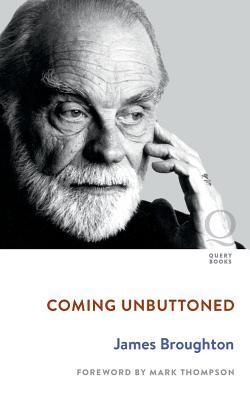 James Broughton (1913-1999) was a poet, filmmaker and author who was part of the San Francisco Renaissance, a predecessor of the Beats movement. He was a member of the Sisters of Perpetual Indulgence, a street performance group that uses drag and religious images for charity and LGBT activism, and the Radical Faeries, a spiritual group for gay men. Broughton maintained a joyful, sexually open attitude throughout his experimental films. He delighted in breaking taboos in work like The Bed, a 1967 short film that "celebrated the dance of life" and won multiple film festival awards.
James Broughton (1913-1999) was a poet, filmmaker and author who was part of the San Francisco Renaissance, a predecessor of the Beats movement. He was a member of the Sisters of Perpetual Indulgence, a street performance group that uses drag and religious images for charity and LGBT activism, and the Radical Faeries, a spiritual group for gay men. Broughton maintained a joyful, sexually open attitude throughout his experimental films. He delighted in breaking taboos in work like The Bed, a 1967 short film that "celebrated the dance of life" and won multiple film festival awards.
In 1993, Broughton wrote the autobiography Coming Unbuttoned (published by City Lights Books). He recalls the earliest meeting with his muse, Hermy, whose radiant presence reappeared periodically from age three on: "He insisted I would always be a poet even if I tried not to be.... Despite what I might hear to the contrary the world was not a miserable prison, it was a playground for a nonstop tournament between stupidity and imagination. If I followed the game sharply enough, I could be a useful spokesman for Big Joy." Coming Unbuttoned shows how Broughton brought Big Joy to all his endeavors, from a professorship at the San Francisco Art Institute to his many relationships with men and women. Last year, Query Books republished Coming Unbuttoned ($17.95, 9781944507015) with a new foreword by Mark Thompson, author of the Gay Spirit, Gay Soul and Gay Body trilogy and editor for the Advocate magazine. --Tobias Mutter
Rediscover: Coming Unbuttoned
Book Review
Fiction
Waking Lions
by Ayelet Gundar-Goshen, trans. by Sondra Silverston
"He's thinking that the moon is the most beautiful he's ever seen when he hits the man." The opening line of Ayelet Gundar-Goshen's intense, edgy Waking Lions perfectly captures the moment when Dr. Eitan Green's life changes forever. Eitan, a successful brain surgeon and father of two, has always been a kind and caring person. But his recent forced transfer from Tel Aviv to small town Beersheba (after he threatened to expose corruption in the Tel Aviv hospital) has embittered him. One night, in a fit of rage after an endless shift, he drives recklessly through the Israeli desert on his way home, and hits and kills an illegal Eritrean immigrant.
Knowing that his family's life would be forever altered, Eitan makes the split-second decision to flee the scene of the accident. But the next day the immigrant's widow shows up at Eitan's door, holding his wallet and making extraordinary demands. As Waking Lions unfolds, Eitan must decide how far he will go to keep his actions a secret from his wife, Liat, a police detective.
Tense from the very beginning, as Eitan's anger seeps through the page, Waking Lions is immensely suspenseful. Ayelet Gundar-Goshen's (One Night, Markovitch) alarmingly realistic and superbly written novel will leave readers wondering what they might be capable of under duress, and what makes a good person do such an awful thing--and if a marriage can survive such deception. The difficult decisions faced by Eitan, Liat and the Eritrean community are haunting. --Jessica Howard, blogger at Quirky Bookworm
Discover: In this tense thriller, an Israeli brain surgeon flees the scene of a hit-and-run and is blackmailed by the victim's widow.
Little, Brown,
$26,
hardcover, 352p., 9780316395434
No Other World
by Rahul Mehta
Rahul Mehta (Quarantine) crafts a lovely story about personal discovery and family ties in his debut novel, No Other World. In the suburbs of western New York, 12-year-old Kiran Shah is causing concern for the neighbors. He's been watching the Bells' house from across the street, transfixed by his schoolmate's father, Chris. But Kiran's parents, immigrants from India, have enough on their minds: Nishit is a successful doctor but feels responsible for his widowed brother back in India, and Shanti is growing dissatisfied with her arranged marriage. Meanwhile, their daughter, Preeti, has become involved with a rough young man from school.
Hindsight is 20-20 for the Shah family as Mehta leads readers back and forth across a decade that leaves Kiran--and those who love him--utterly transformed. While it takes time for him to understand his attraction to men, it requires grace and patience for his family to come to terms with the fact. And the compassion Kiran needs from his sister as an adult may be the very comfort he neglected to give her when she was a teen with a dangerous boyfriend.
Like Tom Perrotta, Mehta digs into suburban angst and household secrets with insight and humor. Cultures, generations, religions and genders clash as the Shahs face tensions that have built up over the years. For Kiran, this means traveling to his parents' home country, where he finds a kindred spirit in a beautiful young outcast. A family saga for the 21st century, No Other World journeys into daunting horizons to discover the familiar. --Dave Wheeler, associate editor, Shelf Awareness
Discover: A young man comes of age amid his suburban family's hidden turmoil.
Harper,
$25.99,
hardcover, 304p., 9780062020468
The Lost Book of the Grail
by Charlie Lovett
Arthur Prescott is happily ensconced in his life in Barchester, England, teaching at the university, spending untold hours in the library working on his never-finished guidebook to Barchester Cathedral, and continuing his secret search for the Holy Grail. But the sudden arrival of Bethany Davis, an attractive young American who has been charged with digitizing the library's manuscripts, upends Arthur's world. Prepared to defend his beloved library against the onslaught of digital technology, Arthur is shocked to find that Bethany's passion for books--and the Grail--equals his own. The unlikely pair embark on a twofold quest: searching for the Grail and for the lost Book of Ewolda, which contains the story of the cathedral's patron saint. Charlie Lovett spins a fascinating literary and historical mystery in The Lost Book of the Grail.
Lovett (First Impressions) anchors his story in the present day, but deftly interweaves flashbacks from multiple historical eras--the night in 1941 when Nazi bombs hit the cathedral library; the origins of St. Ewolda's story in A.D. 560. Bethany's sunny optimism provides a nice foil for Arthur's crusty skepticism, and Lovett explores the nature of faith and doubt while unraveling the long history of the cathedral and its treasures. Supporting characters like Gwyneth the cathedral dean are a delight, and the ending, while tidy, is entirely satisfying. For bibliophiles, Grail enthusiasts and anyone who loves a good quest, Arthur's story is a rich, erudite and entertaining adventure. --Katie Noah Gibson, blogger at Cakes, Tea and Dreams
Discover: An unlikely pair of rare-book enthusiasts embarks on a twofold quest for the Holy Grail and a lost medieval manuscript.
Viking,
$26,
hardcover, 336p., 9780399562518
Everything Belongs to Us
by Yoojin Grace Wuertz
Less a debut and more an arrival, this arresting first novel from Yoojin Grace Wuertz brings to life a South Korea poised on the brink of transformation and the young people caught up in its turbulence.
Childhood friends Namin and Jisun have always managed to ignore their differences, or at least pretended to. As students at Seoul National University in the fading days of the 1970s, though, their friendship may finally fail to survive their divergent paths. Jisun lives in a mansion and stands to inherit her father's wildly lucrative shipping business, but she rebels against her family's prestigious legacy by acting as a translator for American missionaries who secretly encourage factory workers to unionize.
Namin, her parents and her elder sister, Kyungmin, share a three-room house with no hot water or indoor plumbing in one of Seoul's poorest neighborhoods. Kyungmin works long hours in a factory, and their parents operate a dilapidated food cart to pay for Namin's education in hopes she will raise the family from poverty. All Namin wants is a gateway to the success she needs to care for her mentally handicapped brother, who lives with her grandparents. Though a mutual outsider status at the private girls' school Jisun and Namin both attended in childhood led to the pair bonding, their growing impatience with each other's differing views of the future damages their relationship.
Inspired by stories of her parents' college days in South Korea, Wuertz evokes a time of change in a country with which most Westerners aren't very familiar. Powerful and absorbing, Everything Belongs to Us introduces a new and compelling voice. --Jaclyn Fulwood, blogger at Infinite Reads
Discover: South Korea comes to life in this debut following two college students, one rich and one poor, as their lifelong friendship struggles to its close.
Random House,
$27,
hardcover, 368p., 9780812998542
Mystery & Thriller
Death Going Down
by María Angélica Bosco, trans. by Lucy Greaves
Buenos Aires after World War II is filled with émigrés who escaped the horrors of war and would like to forget their pasts. Death Going Down, María Angélica Bosco's (1917-2006) first novel, opens with German citizen and war bride Frida Eidinger found dead in the elevator of a building not her own. Her killer is one among a cast of suspicious characters motivated by past trauma and current jealousies: "This case is one of a passionate obsession and its resulting resentment and devastation."
Inspectors Ericourt and Blasi discover that Frida conducted secret evening trips to the apartment building where she died. Her husband was aware of her activities, and residents of that building have murky connections to her past. They include a Bulgarian photographer and his sister; a physician quick to dispense tranquilizers; a womanizing drunk; and an invalid with a dependent wife and rebellious daughter. There are plenty of possible clues and motives to consider, but Blasi slyly warns readers to be wary of red herrings. "I don't like clues. Their interpretation often leads us the wrong way." The suspects are caught in a web of evasions and fabrications before Ericourt and Blasi piece together the facts of the case and re-create the fateful night and reveal the murderer.
Death Going Down won the inaugural Emecé Novel Award in 1954, initiated to recognize new Argentinean authors. This is a fine example of translated fiction newly brought to the attention of English-speaking readers. --Cindy Pauldine, bookseller, the river's end bookstore, Oswego, N.Y.
Discover: This hardboiled mystery pits detectives against the many possible suspects in the murder of a German woman in Argentina.
Pushkin Vertigo,
$13.95,
paperback, 160p., 9781782272236
Biography & Memoir
Judy and I: My Life with Judy Garland
by Sid Luft
When Judy Garland married her third husband, Sid Luft, in 1952, he was a low-level agent making deals with poverty row studios like Monogram Pictures, and she was a star without a studio. "She had a track record six miles long of hysteria, attempted suicide, and walking off of movie sets," writes Luft, who became her agent and began repairing her reputation by setting up cross-country concert dates.
During their 13-year marriage, Garland ricocheted between triumphs (two children and two Oscar nominations) and turmoil (pill addiction, numerous hospitalizations and rehab stints). As the producer of Garland's comeback film, 1954's A Star Is Born, Luft offers an insightful look at its making (both Cary Grant and Frank Sinatra wanted to co-star) and unmaking (the greedy studio cut the three-hour film to 100 minutes to gain more daily showings and the movie sunk).
Luft worked on Judy and I for decades, but only completed the chronology up to 1960 before his 2005 death. Randy L. Schmidt (Little Girl Blue: The Life of Karen Carpenter) shaped the manuscript, sorted through a mountain of research and completed this compelling memoir. It now ends with Garland's overdose death in 1969 at the age of 47. Luft is a controversial figure to many Garland fans. Was he a savior or exploiter? His warts-and-all approach toward Garland ("She was married to the drugs before she met me and she never really got divorced") is equally critical of his younger self. Judy & I is a gossip-lover's delight, but it's also heartfelt, tough and sad. --Kevin Howell, independent reviewer and marketing consultant
Discover: Judy Garland's third husband offers an intimate and compelling portrait of a great artist who was depressed, suicidal and addicted to pills and alcohol.
Chicago Review Press,
$30,
hardcover, 480p., 9781613735831
History
Dodge City: Wyatt Earp, Bat Masterson, and the Wickedest Town in the American West
by Tom Clavin
Tom Clavin (The DiMaggios) opens Dodge City: Wyatt Earp, Bat Masterson and the Wickedest Town in the American West with Masterson stepping off the train in Dodge City in Kansas, expecting trouble. The scene is tense; Clavin deliberately evokes the images of lawlessness and violence associated with the city's name.
The uneasy relationship between that violence and the creation of a system of frontier justice unfolds here. Clavin builds on the premise that most of the books and films about Wyatt Earp, Bat Masterson, Doc Holiday and Dodge City are fiction, "including the ones published as nonfiction." He sets up popular images, and then carefully dissects them in search of a measure of historic truth. (Not an easy task--legend and misinformation appeared almost immediately, thanks to the popular press, dime novels and inconsistencies in the accounts of the characters involved.) He follows his main characters, their relatives and an enormous cast of cowboys, outlaws and lawmen through their travels in and out of Dodge City. More importantly, he sets "the wickedest town in the West" in its historical context of buffalo hunting, cattle drives, westward expansion of the railroads and a national sense of manifest destiny.
The result is a colorful and careful depiction of a city in transition. As Clavin presents it, Dodge City was violent, lawless and complex. The dividing line between outlaw and lawman was fluid. And justice was a moving target. --Pamela Toler, blogging at History in the Margins
Discover: The "wickedest town in the West" created frontier justice in spite of itself.
St. Martin's Press,
$29.99,
hardcover, 400p., 9781250071484
Science
The Body Builders: Inside the Science of the Engineered Human
by Adam Piore
In the 1970s, TV's Steve Austin was the stuff of kids' dreams. Rebuilt after a horrific accident, the Six Million Dollar Man had a bionic eye, could run alongside a car and leap onto tall buildings. Thanks to real-world bioengineering, the Steve Austin model has been left in the dust. Today we can regenerate tissue to grow new body parts, see using our ears, stave off degenerative diseases with enhanced muscle growth, and medically augment intuition.
It may still sound like television fantasy, but journalist Adam Piore's The Body Builders offers a behind-the-scenes peek into the astounding realm of human engineering. Steeped in heady principles, Piore uses examples of tragedy and indomitable human resilience to give life and depth to the subject. The science is complex, but his conversational style is captivating whether or not one knows how big a container you'd need to hold 2.4 million nucleotides.
Neither scientists nor Piore believe the story stops here. Our ever-advancing ability to hack bodies and minds to make "better" versions of ourselves has implications far beyond fixing broken or missing parts. Will the concepts be used for good? Who decides what that is? If we have the ability to engineer superhuman soldiers who are impervious to pain, should we?
The Body Builders raises these and many other difficult questions. The answers are unknown, but there is no denying Piore has crafted a fascinating foundation for discussion, while highlighting the dedication of our scientists and the resilience of the human spirit. --Lauren O'Brien of Malcolm Avenue Review
Discover: Journalist Adam Piore takes a fascinating look at the scientists and engineers working in the realm of human augmentation.
Ecco Press,
$26.99,
hardcover, 400p., 9780062347145
Pets
Always by My Side: Life Lessons from Millie and All the Dogs I've Loved
by Edward Grinnan
In Always by My Side, Edward Grinnan--editor-in-chief of Guideposts, a magazine filled with affirming, life-changing stories of faith--details the years he has shared with a host of dogs that have enriched his complicated life. Grinnan, a recovering addict, believes God sent dogs to guide his way "from the darkness that once threatened to swallow" him.
The narrative, which is heartfelt and candid, centers on Millie--a much-loved and highly sensitive golden retriever--who is riddled with foibles, yet demonstrates courage, even through illness. Along the way of telling her story, Grinnan recounts his relationships with other unforgettable dogs, often in times of adversity: Sparky, an "unruly, errant beagle"--Grinnan's sister's dog--offered him companionship during an infirm childhood in Detroit; Pierre was a smart poodle that comforted him after his older brother, a 12-year-old with Down syndrome, mysteriously drowned in a Michigan lake; Sally Browne--an egotistical yet sweet cocker spaniel--demonstrated pure compassion, especially for the homeless; Marty, an enormous, "crazed" Labrador, crashed a Central Park wedding; and Rudy, "a big burly cocker spaniel," shared in Grinnan's quest for sobriety and served as a "divinely dispatched matchmaker" in his union with wife Julee.
"Sometimes God shouts, sometimes he whispers, and sometimes he sends a woof," Grinnan (The Promise of Hope) states, as his great affection and gratitude for dogs, especially Millie, teaches him personal and universal lessons about love, life and letting go. --Kathleen Gerard, blogger at Reading Between the Lines
Discover: A dog lover shares stories about unforgettable canines that have offered him companionship, adventure and life lessons.
Howard Books/Simon & Schuster,
$24.99,
hardcover, 288p., 9781501156380
High Noon: The Hollywood Blacklist and the Making of an American Classic
by Glenn Frankel
Film buffs and history aficionados will be delighted and riveted by Glenn Frankel's insightful and intimate look at the making of the classic 1952 western High Noon. Most remember the unconventional and left-leaning western as the film that won Gary Cooper a Best Actor Academy Award. Few remember that it was made at the height of the Red Scare in Hollywood, when hundreds of studio employees were blacklisted out of jobs because of their liberal politics. Carl Foreman's award-winning screenplay was an allegory about American foreign policy during the Korean War and a swipe at the House Un-American Activities Committee (HUAC) and Senator Joseph McCarthy.
Frankel (The Searchers) rightfully focuses on Foreman as the hero behind High Noon. He wrote the script after his 1947 appearance before HUAC, where he refused to name suspected Communists. Foreman was labeled an uncooperative witness and, after the release of his film, was blacklisted from films until 1961. His presence on High Noon strained relationships with its producer (Stanley Kramer) and director (Fred Zinnemann). It also made the film a target of some of the loudest right-wing hawks in Hollywood--like columnist Hedda Hopper and actor John Wayne.
Frankel's saga presents a gripping and coherent picture of the corrupt politics, paranoia and fear mongering that drove Hollywood studio heads to capitulate to anti-Communist witch-hunters. High Noon is an important and compelling history of a great film made during one of the U.S.'s worst periods. --Kevin Howell, independent reviewer and marketing consultant
Discover: Glenn Frankel creates a fascinating and definitive portrait of the left-leaning western High Noon during the height of the McCarthy blacklist era.
Bloomsbury,
$28,
hardcover, 400p., 9781620409480
Children's & Young Adult
The Inexplicable Logic of My Life
by Benjamin Alire Sáenz
Printz Honor recipient Benjamin Alire Sáenz (Aristotle and Dante Discover the Secrets of the Universe) returns with a complex slice-of-life drama.
Salvador, a white 17-year-old, has lived a quiet, happy life in El Paso, Tex., with his adoptive father, Vicente, a gay Mexican-American who always supported Sal. However, on his first day as a high school senior, normally laid-back Sal punches another student for insulting Vicente. Soon after, he finds himself speaking with his fists again. As Sal tries to understand and control his sudden outbursts, Vicente gives him a sealed letter from his mother, who died when he was three. Events spiral beyond Sal's control as Mima, his adored grandmother, receives a terminal cancer diagnosis, his best female friend Samantha faces a life-altering tragedy, and his best male friend Fito struggles with an insecure home life and bullying at school. Over the course of the year, Sal learns that choices, not circumstances, define a man.
Sáenz once again proves himself the master of relationship development; at heart, his latest is the story of a devoted father and son discovering how to live their own lives and of two lifelong friends turning and returning to their unbreakable bond. Delicately wrought dialogues between major characters quietly convey deep and abiding love. Older teens especially will relate to Sal's transitional year as he simultaneously grapples with college essays and his inner demons. Loosely plotted to mirror the unpredictable cadence of real life, The Inexplicable Logic of My Life affirms the blessing of a supportive family, whether made by birth or by love. --Jaclyn Fulwood, lead librarian at Del City Public Library, Oklahoma
Discover: In this realistically knotty YA novel, 17-year-old Salvador learns to give and take support during his tumultuous and tragic senior year.
Clarion,
$17.99,
hardcover, 464p., ages 15-18, 9780544586505
Deep in the Woods
by Christopher Corr
In Deep in the Woods, British illustrator Christopher Corr, whose distinctive style has graced A Year Full of Stories and other picture books, brings his luminous artwork to a retelling of a familiar Russian folk tale. "Deep in the woods was a little wooden house. It was painted bright white, with nine neat windows and a red front door." Sadly, this "perfect little home" stands empty, until a mouse passes by one day and decides it's the right place for him to set up housekeeping. Next, a frog hops by and gets the same idea. The mouse welcomes him warmly. And then a rabbit shows up, followed by a beaver, a fox, a rooster and so on. All--predator and prey alike--settle in, adding their homey touches and singing the night away. But when a bear comes along and asks if there's room for him, the music and dancing screech to a halt. "No," the animals answer unhappily, "There isn't room for a big bear in this little wooden house!" Unswayed, the bear tries every means of access: the windows, the door and, finally, the roof. "The little wooden house begins to tremble... Crrrreeaaak!" And "Crrumph!" goes the house. Disaster! Are the animals destined to become homeless again? Not while the strong and caring bear is around!
Thick, rich paper absorbs Corr's brilliant neon colors, and the textured cover adds to the overall sensual experience of this radiant picture book. The classic folk tale's theme of inclusiveness and resourcefulness is as fresh today as it has been for generations of children. --Emilie Coulter, freelance writer and editor
Discover: There's always room for one more--until there isn't--in this retelling of the classic Russian folk tale, illustrated with gorgeous, wild colors by Christopher Corr.
Frances Lincoln,
$17.99,
hardcover, 32p., ages 3-7, 9781847807267
Amina's Voice
by Hena Khan
Pakistani American sixth grader Amina Khokar and her best friend Soojin Park were always "the only kids in elementary school who had names that everyone stumbled over." But now Korean-born Soojin, whose family is about to gain U.S. citizenship, wants to change her name to something more American, like Jessica or Melanie. She's also warming up to a popular white girl named Emily who has never been friendly to Amina and Soojin. Soojin seems to be moving into adolescence faster than Amina can keep up, and their comfortable friendship is teetering. "[S]omething about Soojin wanting to drop her name makes me worry that I might be next," Amina says. Meanwhile, Amina's shyness prevents her from auditioning for a school solo even though she longs to sing; her older brother, Mustafa, is pushing back against the family's Muslim traditions; and their conservative uncle is coming for a three-month visit, during which their parents expect them to "be perfect." Their close-knit family is on edge as their Muslim customs bump up against contemporary Milwaukee culture. When a terrible act of vandalism against their mosque throws her community into fearful turmoil, Amina must decide if she's brave and open-minded enough to use her voice to make a difference.
Amina's Voice is the first title in Salaam Reads, Simon & Schuster's imprint dedicated to publishing books that feature Muslim characters and stories. Hena Khan (It's Ramadan, Curious George) writes a gentle coming-of-age story universal in theme and original in context, and appealing to any reader who has just wanted to slow the world down. --Emilie Coulter, freelance writer and editor
Discover: Changing friendships, cultural conundrums and a shocking act of vandalism make middle school a struggle for a Pakistani-American Muslim girl.
Salaam Reads/S&S,
$16.99,
hardcover, 208p., ages 8-12, 9781481492065

 Orenstein's genius is in her ability to coalesce this broad range of insight and information into something that urges us to think beyond the standard talking points. Yes, disease, consent and contraception are need-to-knows. But so is the idea that sexuality can "be a source of self-knowledge and creativity and communication." And girls should be emboldened to "ask for what they want in the bed, and to get it." Yes, as my youngest daughter would say, this conversation would, most likely, be "cringe-y." But oh, so worth it. --Stefanie Hargreaves, editor, Shelf Awareness for Readers
Orenstein's genius is in her ability to coalesce this broad range of insight and information into something that urges us to think beyond the standard talking points. Yes, disease, consent and contraception are need-to-knows. But so is the idea that sexuality can "be a source of self-knowledge and creativity and communication." And girls should be emboldened to "ask for what they want in the bed, and to get it." Yes, as my youngest daughter would say, this conversation would, most likely, be "cringe-y." But oh, so worth it. --Stefanie Hargreaves, editor, Shelf Awareness for Readers



 Book you're an evangelist for:
Book you're an evangelist for: James Broughton (1913-1999) was a poet, filmmaker and author who was part of the San Francisco Renaissance, a predecessor of the Beats movement. He was a member of the Sisters of Perpetual Indulgence, a street performance group that uses drag and religious images for charity and LGBT activism, and the Radical Faeries, a spiritual group for gay men. Broughton maintained a joyful, sexually open attitude throughout his experimental films. He delighted in breaking taboos in work like The Bed, a 1967 short film that "celebrated the dance of life" and won multiple film festival awards.
James Broughton (1913-1999) was a poet, filmmaker and author who was part of the San Francisco Renaissance, a predecessor of the Beats movement. He was a member of the Sisters of Perpetual Indulgence, a street performance group that uses drag and religious images for charity and LGBT activism, and the Radical Faeries, a spiritual group for gay men. Broughton maintained a joyful, sexually open attitude throughout his experimental films. He delighted in breaking taboos in work like The Bed, a 1967 short film that "celebrated the dance of life" and won multiple film festival awards.